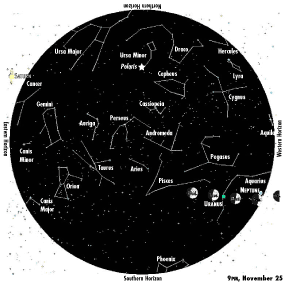 |
Sky Watch
by J. Alex Knoll
|
Let it Earthshine
Light from earth lightens the moon’s face
A waxing crescent moon returns to evening skies, appearing low on the western horizon at week’s end and climbing higher night by night. By Wednesday, half the moon’s face is illuminated at first quarter, so called not for how much we can see but because the Moon is now one-quarter of the way through its 28.53-day lunar cycle.
Look to the moon before it reaches first quarter and you’ll see more than an illuminated crescent. Notice the darkened silhouette of the entire disc. No, you’re not seeing the dark side of the moon, which never faces earth while visible, but rather a phenomenon called earthshine. The bright crescent is illuminated by sunlight reflected from the moon to our eyes; earthshine is the result of sunlight reflected from earth’s atmosphere back to the moon and then back to our eyes. The darker, earthlit moon reveals far more of the moon’s surface details, and in the days following new moon, look for the old moon in the new moon’s arms.
Saturn climbs above the southeast horizon just after 10:30, the only planet visible in our evening skies and the brightest light other than the moon. Following behind the ringed planet by only five degrees — about half the width of your outstretched fist — shines Regulus, the heart of Leo the lion. Before daybreak, after 7am this week, both Saturn and Regulus are almost directly overhead.
Mercury crests the eastern horizon as the sky begins to lighten in the hour before dawn. Saturday marks the planet’s greatest elongation — its farthest point away from the sun, all of 20 degrees. But that’s as good as it gets for spotting this elusive planet. Look to the east-southeast horizon around 5:30am. Mercury’s steady light is brighter than any nearby stars’, although just three degrees below shines the Zubenelgenubi, one of the two scales in the constellation Libra.